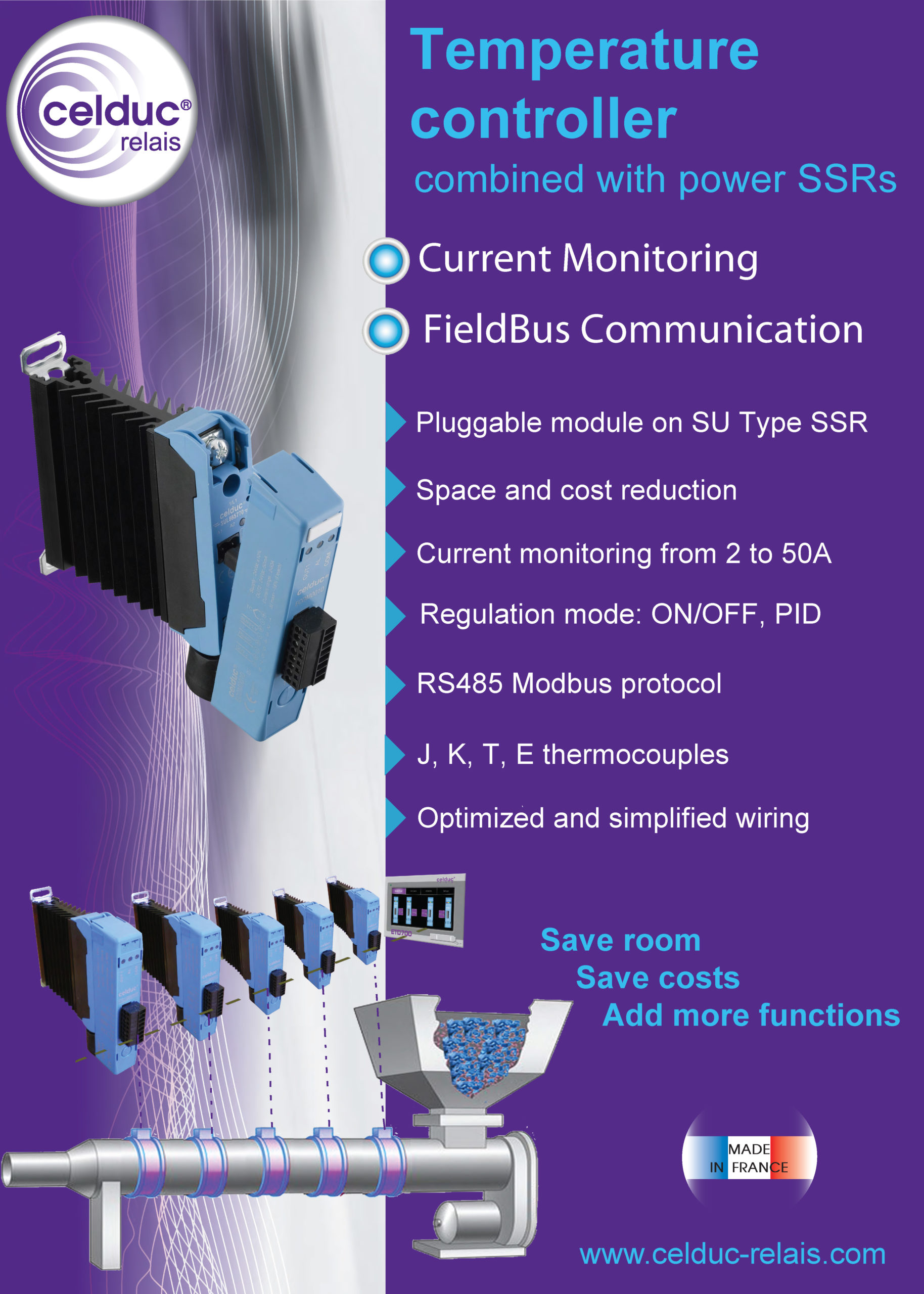Blog - EXPERTISE & INNOVATIONS - Solid State Relays - Fieldbuses : To a world of communication …
Fieldbus is the name of a family of industrial computer networks used for real-time distributed control.
The communication between control station, operating terminals and field devices simplifies the start-up and parameterization of all components. The communication functions allow diagnostic data, which are provided by up-to-date field devices, to be evaluated.
The essential objectives in fieldbus technology are to reduce installation costs, save time and costs due to simplified planning as well as improve the operating reliability of the system due to additional performance features especially by complex systems with a large number of in-/output signals.
Fieldbus systems are usually implemented in new plants or existing plants that must be extended.
Fieldbus is simply a means of communicating with input devices (sensors, switches, etc.) and output devices (valves, drives, indication lamps etc.) without the need to connect each individual device back to the controller (PLC, Industrial PC etc.). It allows two-way communications between field devices and control systems thanks to a simple All or Nothing type data or complex analog type data (setpoints, alarms, etc.).
Therefore, overall, Fieldbus can reduce costs.
Topology involves the manner in which the fieldbus devices are connected to the data highway. There are several possible topologies that are employed as per the needs of the plant geography. Topology options include : Ring, Branch, Star and Daisy Chain.
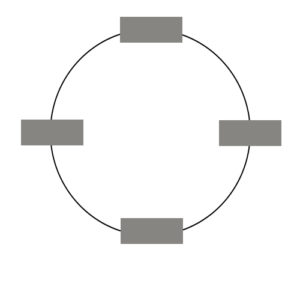 Ring Topology
Ring TopologyEach node in a ring topology connects to exactly two other nodes.
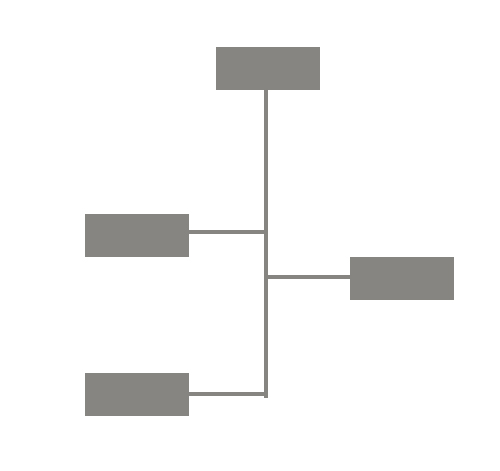 Branch Topology
Branch TopologyIt is a hybrid topology that includes star networks that are interconnected via daisy chain topologies.
 Star Topology
Star TopologyAlso known as a spoke and hub configuration, in this setup devices are connected not to one another but rather to a central master/controller or hub. So messages can’t be passed from one device to another directly but must go through the central master/controller.
 Daisy Chain Topology
Daisy Chain TopologyThe devices are series connected in a particular segment.Device connections to the segment should be such that dis-connection of a single segment would not lead to total isolation of that segment.
Fieldbus has several different “layers.”
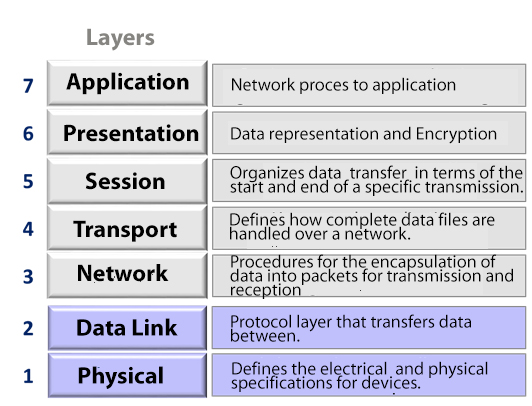
Physical layer is the Fieldbus layer connected with instrument devices in the field means how the data are transferred from one point to another point on the network.
Fieldbus allows options for three types of communication media at this layer, namely, Wire, Fiber-optic and Radio :
Twisted pair copper cable is the most popular and cheapest medium in use.
Main serial communications are RS232, RS485 and CAN.
The fiber optics layer uses light to transmit data. Fiber optics operation begins with an electrical signal which is converted into light, transmitted along the fiber optic cable and then converted back from light to an electrical pulse at its destination.
Light can go both ways along the cable, travels very quickly, and can transmit the signal very long distances over high quality fiber. Fiber optics are also ideal for areas with much ambient electrical noise.
Advantages :
• extends network over large distances
• solves grounding problems
• effective in high noise applications
• offers more versatile topologies
Wireless solutions available on the market are radio and infra-red technologies.
Wireless technology can save on physical wiring costs. Laying wires from one device to another costs money, both in the actual wire used and in the labor to lay it properly.
Wireless is also the only option for some applications where it can be difficult, if not impossible, to run the wires, such as near rotating machines or through barriers such as roads.
To sump up, here are the Advantages :
• extends range
• solves grounding problems
• saves on wiring costs
• excels in applications where it is difficult or impossible to run wires
Every kind of Fieldbus has its physical layers and inside this there are components.
The Data Link layer is the protocol layer that transfers data between adjacent network nodes in a wide area network or between nodes on the same segment. The Data Link Layer provides the functional and procedural means to transfer data between network entities and provides the means for error detection and correcting events that occur in the physical layer.
The way the pulses are organized in a period of time make “frames”. Inside the frame there is the data. Frames structure and packets of frames correspond to the “language” of the fieldbus : the Protocol (Protocol : Means dialogue’s rules between the same comunicating entities’ layers).
For example, for Modbus you have 8 pulses (1 byte = 1 pulse)
As there could be some disturbances on the system and all these words could be disturbed. The total sentence must be true and then you have a control at the end. If there is something wrong in the CRC it means there is something wrong in the message : the salves will ask the Master « please tell your message again ».
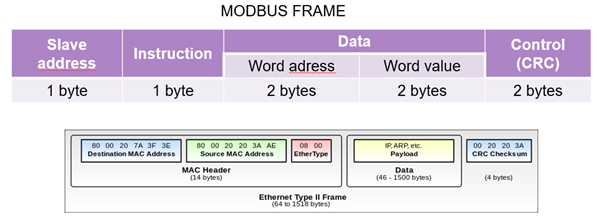
Celduc’s ECOM module is with Modbus.
There are hundreds of Fieldbuses available on the market.
Here are the criteria to choose the Fieldbus :
–RS485 based connection with protocol MODBUS or CANOPEN (faster) are the cheapest and well adapted to sensor or relays
–IO-LINK (3 wires serial communication) is a free (no fees) new candidate very used for sensors and actuator
–Ethernet based fieldbuses makes the cost of each node too high and oversized in data to be used for simple relays.
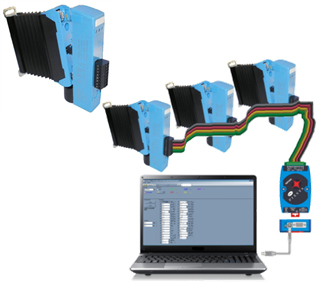
Today, it is clear that communication and safety are our two biggest concerns ; these issues will challenge us further as we head into the future…
SUx series with power and temperature controller ECOM (RS485/Modbus RTU serial Link).
More information needed ? Read our last blog article introducing celduc ECOM Module.
